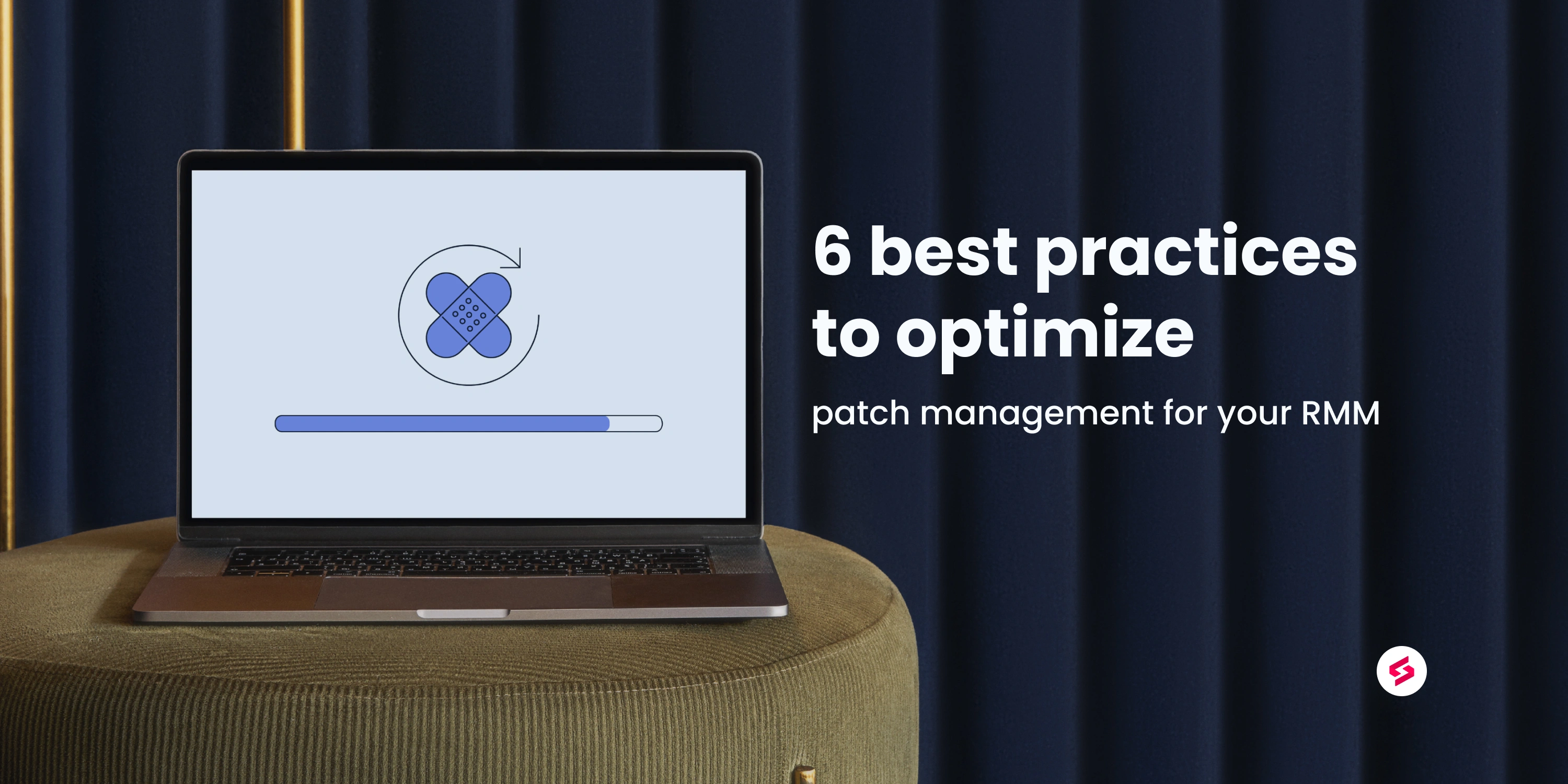If you call tech support when something breaks, the first thing they ask is if you've updated to the latest version of the software (well, at least after they've asked you if you've tried switching it off and turning it back on again).
Because the software we use is constantly improved to for better usability, performance, and security. This iterative growth is achieved through patches. A patch is a small change that is made to a piece of existing software, usually to fix bugs and security vulnerabilities.
It's fairly easy to install these patches to a few devices manually, but, how do companies that have a large number of endpoints (not to mention the different software they use) manage patches?
Well, they use an RMM (Remote Monitoring and Management) tool that constantly monitors the devices on their network to run the patches.
Why is this important?
A 2017 study conducted by ServiceNow reveals that a staggering 57% of cyberattack victims claim they could've prevented it with a security patch.
While having a solution (patch management with RMM) to this problem is great, it won't help if you don't use it properly. 74% of the companies that took the survey admitted that couldn't patch fast enough in spite of knowing about it for various reasons.
Here are 6 best practices that could help optimize the patch management process with your RMM.
Streamline the workflow
Different companies employ different protocols when it comes to deploying patches. However, creating a simple and repeatable process that paves way for consistency is key to keeping your client's endpoints up to date.
Here's a simple 6-step framework that you could use right away:
- Perform regular rediscovery of all systems.
- Assign risk levels based on patch category: Security software, OS software, other applications.
- Plan a repeatable routine for when each category of patches need to go out.
- Schedule security patches with more frequency over performance patches.
- Run the patches on a test machine and check for any bugs and glitches.
- Review your patch data at the end of each patch cycle to optimize for the next one.
Monitor security updates and announcements
Businesses often use third-party tools to streamline internal tasks. For companies that use multiple tools, it is good practice to take stock of the product inventory and ensure they stay up to date. Subscribing to email lists, newsletters, release notes of the vendors is a great way to make sure you don't miss out on any security updates and announcements.
Automate patch deployment
57% of the companies that took part in the same ServiceNow study claimed that their patching efforts often fail because teams use spreadsheets and emails to track and assign patching tasks. Leverage the scheduling feature in the patch management section of your RMM to avoid unnecessary hassle. Tools like SuperOps.ai offer superior automation capabilities enabling the user to schedule regular security/update scans and deploy corresponding patches under specified conditions.
Test patches before you deploy
While a patch is often meant to fix an existing tool, it doesn't always mean they sync well with the whole system. Security patches are known for breaking existing business applications often. A good way to mitigate this problem is to test the patch in a controlled environment (one or two test devices) before rolling it out to the whole network.
Ensure regular reporting
Clients expect to know the status of their security every once in a while. Sharing reports that contain patch management information like frequency, history, patch category, and resolution times on a monthly cadence can help build trust and long-term relationships with your clients. Besides, it is a great way to get a birds-eye of the patch management pipeline, allowing you to identify bottlenecks and remove them.
Automate third-party patching
It is common practice for companies to use open source libraries to build software faster without reinventing the wheel. However, by doing so, they also run the risk of exposing the software to the same vulnerabilities as that of the open-source components. Tools like WhiteSource detects open source libraries and creates a pull request with updated versions for developers.
Optimizing patch management can save a huge amount of time and money, while creating a predictable engine to keep your client machines up to date. If you're an MSP looking to buy an RMM solution with superior patch management, you can try SuperOps.ai for free today!





